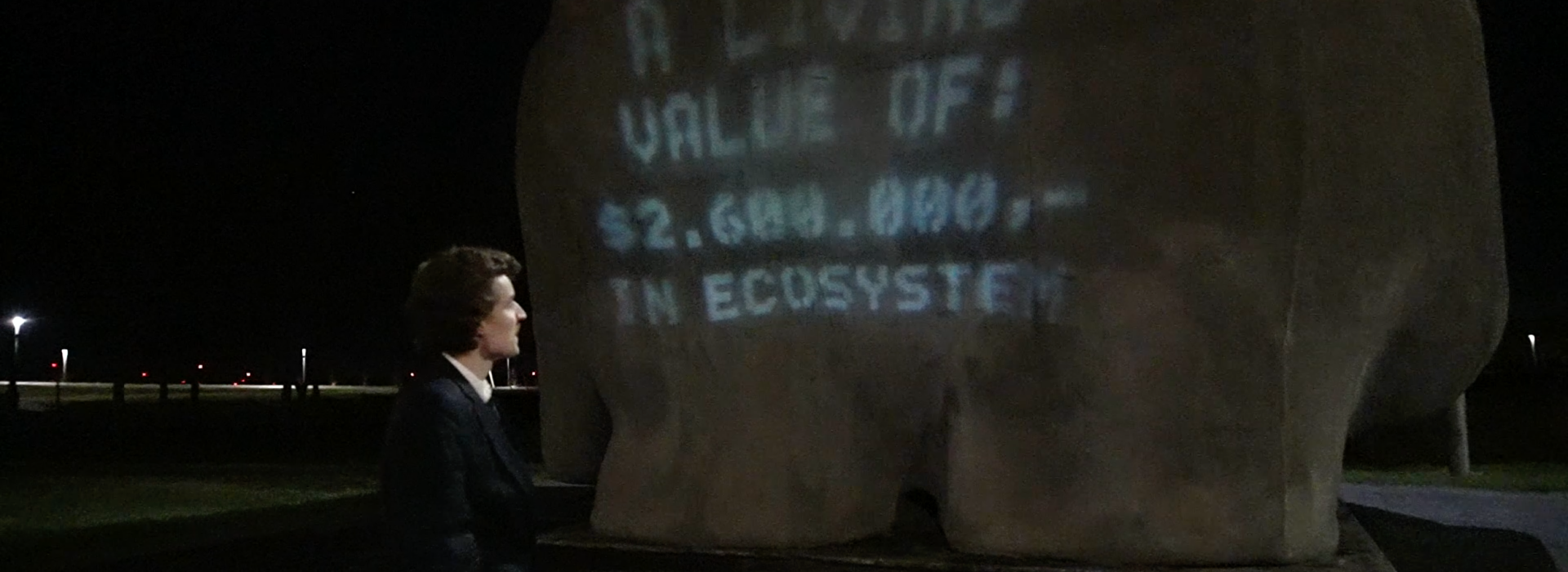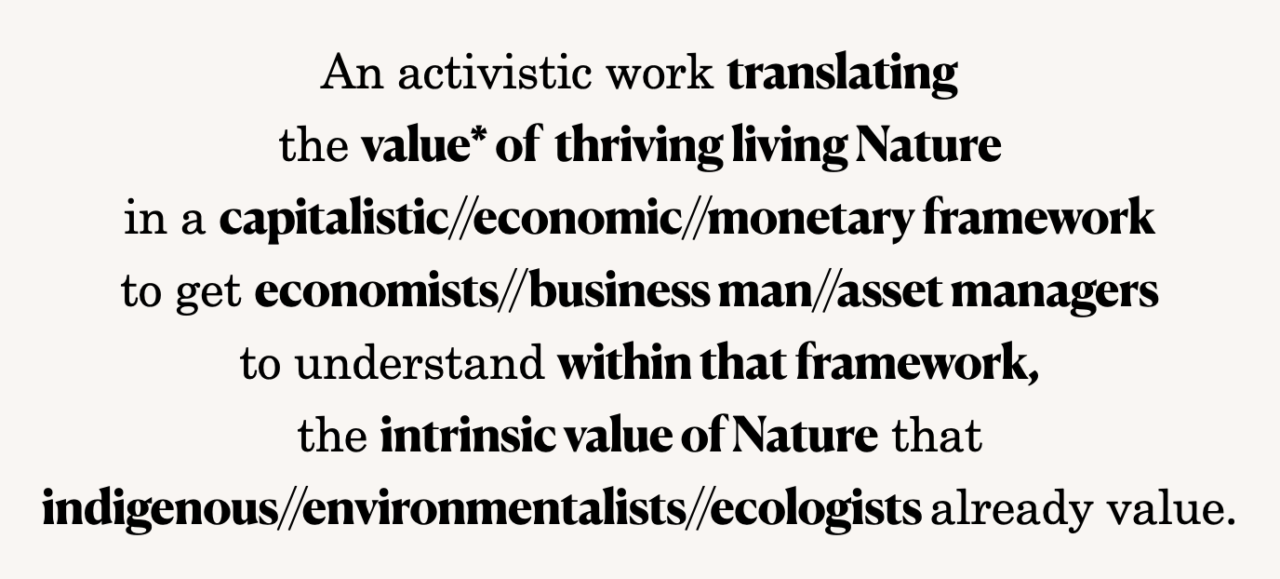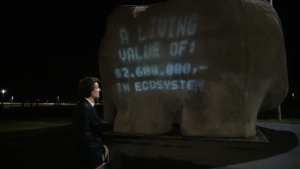SHADOW TRAN$LATION


CUT ALL TREES, CATCH ALL FISH, HUNT ALL ANIMALS, AND SELL THEM. THE ECONOMY WILL GROW, THE GPD WILL RISE, AND WITH IT NATURE AND HUMANITY’S DOWNFALL.
THEO REKELHOF
NATURE HAS A ZERO VALUE
In our current economic model and quantifications,
there is a fundamental error.
Nature has a zero price value. It only has value when we, humans, catch and sell it. There is no negative consequence, no price to pay for taking Nature from its habitat and the destruction that it causes. Part of this is the shortcomings of the gross domestic product (GDP), the standard metric of growth for more than 70 years.
GDP was intended to capture a single dimension at a single point in time, not to measure sustainability. So, for example, generating and selling electricity from coal-fired power stations can increase GDP, while ignoring the costs of accelerated climate change and increased respiratory disease in those exposed to the pollution. GDP measures indicate that the more fish a nation catches and sells, the better it is
doing. But emptying the seas of fish, and subsequently suffering irreversible damage to the economy and society, is not successful. In these cases, while GDP goes up, nature is running on a deficit.
IMAGINARY REALITY, PLATO’S CAVE ALLEGORY AND CAPITALISM.
One of Theo Rekelhof’s deep obsessions, is the concept of ‘imaginary realities’, which he would describe as “a reality which is imagined but holds true in reality as it is believed and enforced by a majority of people.” Examples of these imagined realities, or constructs, are passports, national borders, and money. They are all concepts that are made up, but by enforcement of institutes, influence your reality.
When born into a society which is dominated by these constructs you will not question these constructs, as it is the reality you were born in. Some constructs you will become aware of, but will then soon realise, escaping these realities, is impossible or at the least, very hard. Here Plato’s cave theory or allegory of the cave comes into play.
Plato’s “Allegory of the Cave” explores the contrast between belief and knowledge. The allegory features prisoners confined in a cave, perceiving only shadows cast by objects carried between them and a fire. One prisoner manages to escape, discovers the outside world, and realizes the true nature of reality. Upon returning to free the other prisoners, he is met with resistance as they fear the unknown and perceive his new “reality” as a maddening consequence of venturing outside the cave. The allegory serves as a metaphor for the journey from ignorance to enlightenment and the challenges faced when attempting to share newfound knowledge.
SHADOW TRANSLATIONSHADOW TRANSLATION
Theo Rekelhof makes the link with Plato by calling money a projection, a shadow in which we believe. Because we were raised into it. Our cave is the monetary and economic system we grew up in. In this project, Theo Rekelhof uses the added monetary value of thriving living Nature in carbon sequestration and projects its shadow onto Nature, or in this case a concrete depiction of Nature (concrete elephant art work by Tom Claassen) , so that people in the capitalistic cave can get a glimpse of Nature’s intrinsic value, on which the shadow is based. The symbol is an interpretation of Nature’s intrinsic value. A symbolic fictional narrative that conveys a secondary meaning.
The projections, powered by solar, are a fragmentation of the sun. Referencing the sun in Plato’s Cave allegory, that first blinds but then show a fuller reality than those who lived in the cave. The fragmentation of the sun is intended to help the people in the Capitalistic cave, adjust to the sun, or other reality.
Theo translates the living value of Nature through shadow language by taking the African forest elephant as an example. Showing the carbon sequestration value a single elephant raises and compares it to the price of its dead value. The elephant’s living value is $2.600.000,- and far outweighs his dead-value of $40.000,-.

Now that the illusion of the zero value of the elephant is lifted, one that kills an elephant will not make $40.000, but instead, be in a -$2.560.000 dept. An illogical choice for the economic mind.
*He portrays this on Tom Claassen’s artwork Olifanten van Almere’ as a symbol. Not for the artist, but for its outdoor placement and visibility.
A shadow translation, on a non living symbol statue.
Fitting for a capitalistic cave devoid of living Nature.
Project details
- Year
- 2022
- Programme
- advertising-beyond
- Practices
- Autonomous
- Minor
- Reimagining Tomorrow Through Arts and Science RASL, WDKA, COD-Arts, TU, Erasmus

